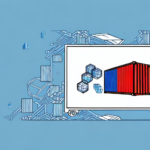Understanding Box Dimensions: A Comprehensive Guide for Efficient Shipping
Boxes play a pivotal role in our daily lives, serving as essential containers for storing personal belongings, packaging products, and safeguarding fragile items during transportation. Grasping the dimensions of a box is vital for selecting the appropriate size for your products or shipments, calculating volume accurately, and ensuring precise labeling and tracking. This article delves into various aspects of box dimensions, including measurement techniques, types of boxes, weight capacity, storage solutions, transportation logistics, environmental considerations, and more.
Why Accurate Box Dimensions are Crucial for Shipping
Accurate box dimensions are fundamental to the shipping process for several key reasons:
- Optimal Fit and Protection: Ensuring the package fits correctly within the delivery vehicle minimizes movement that can cause damage. A box that's too large may allow contents to shift, leading to dents, scratches, or breakage, while a box that's too small may not provide adequate protection against environmental factors like moisture or temperature variations.
- Compliance with Carrier Requirements: Shipping carriers have specific size and weight restrictions. Adhering to accurate dimensions helps avoid additional fees and ensures smooth handling by the carrier.
- Space Optimization: Properly sized boxes can be efficiently stacked and arranged within delivery trucks, maximizing space utilization. This efficiency can lead to fewer trips, reducing both operational costs and the carbon footprint associated with transportation.
According to the United States Postal Service, optimizing package sizes can lead to significant cost savings and reduce environmental impact by minimizing the number of trips required for delivery.
Measuring the Length, Width, and Height of a Box
Accurate measurement of a box's dimensions involves a straightforward process:
- Gather Tools: You'll need a reliable tape measure, a flat surface, and a writing tool.
- Measure Length: Place the box on a flat surface with the longest side facing you. Measure from one end to the other along this side.
- Measure Width: Measure the side perpendicular to the length, ensuring the tape is straight and not angled.
- Measure Height: Measure from the base to the top of the box.
For irregularly shaped boxes, identify the longest points on each dimension and use these measurements to calculate the volume. Consistency in the unit of measurement (inches, centimeters, etc.) is essential for accurate calculations.
When dealing with boxes that have flaps or folds, ensure they are flattened before measuring to obtain precise dimensions.
For more advanced measurement techniques, technologies like 3D scanning can provide detailed dimensional data, especially useful in industrial applications.
Types of Boxes and Their Dimensions
Corrugated Cardboard Boxes
Corrugated cardboard boxes are the most commonly used type for shipping and storage due to their lightweight, affordability, and versatility. Standard sizes range from 4 x 4 x 4 inches to 48 x 40 x 36 inches, with variations in shapes and thicknesses to accommodate different needs.
Plastic Boxes
Plastic boxes are favored for storing items like food, liquids, and chemicals. They come in various sizes and shapes, offering durability and resistance to moisture and contaminants.
Wooden Boxes
Wooden boxes are chosen for their sturdiness and durability, making them ideal for heavy or delicate items that require extra protection during transit.
Metal Boxes
Used primarily for industrial products and machinery, metal boxes can withstand extreme temperatures and pressures, providing superior protection for high-value or sensitive items.
Specialized Boxes
There are also specialized boxes tailored for specific purposes:
- Jewelry Boxes: Small and often lined with soft materials like velvet to protect delicate items.
- Moving Boxes: Equipped with handles and reinforced corners to endure the rigors of transportation.
- Display Boxes: Used in retail settings to showcase products, commonly made from materials like acrylic or glass.
The dimensions of these specialized boxes vary based on their intended use, ensuring maximum protection and functionality.
The Relationship Between Box Dimensions and Weight Capacity
The size of a box directly influences its weight capacity—the maximum weight it can hold without compromising its structural integrity. Several factors affect this capacity:
- Material: The sturdiness of the box material (e.g., corrugated cardboard vs. plastic) determines how much weight it can support.
- Box Size and Shape: Larger boxes may support more weight, but their shape can also impact distribution and capacity.
- Packing Method: Properly packed boxes with adequate cushioning can enhance weight capacity by evenly distributing weight and minimizing stress points.
For instance, a 10 x 8 x 6-inch cardboard box might hold up to 30 pounds, while a larger 24 x 18 x 12-inch box could support up to 80 pounds. Adhering to recommended weight limits is crucial to prevent damage and ensure safety during handling and transit.
Research by the Institute for Packaging Professionals highlights the importance of matching box size with weight to optimize shipping efficiency and cost-effectiveness.
Calculating the Volume of a Box
Determining a box's volume is essential for assessing shipping costs, storage needs, and material usage. The volume is calculated using the formula:
Volume = Length x Width x Height
For example, a box measuring 10 inches (L) x 8 inches (W) x 6 inches (H) has a volume of 480 cubic inches (10 x 8 x 6 = 480).
Accurate volume calculations assist in:
- Determining shipping costs based on dimensional weight.
- Optimizing storage space in warehouses.
- Estimating material requirements for packaging.
According to the Small Business Administration, understanding volume helps in efficient inventory management and cost control.
Impact of Box Dimensions on Storage and Transportation Costs
The size of a box significantly affects both storage and transportation expenses:
- Storage Costs: Larger boxes occupy more space in warehouses, increasing storage fees and reducing the amount of inventory that can be stored in a given area.
- Transportation Costs: Bigger and heavier boxes consume more fuel and may require larger vehicles, leading to higher transportation costs and increased carbon emissions.
Optimizing box sizes can lead to substantial savings. A report by Frost & Sullivan indicates that efficient packaging can reduce transportation costs by up to 15%.
Moreover, minimizing box sizes contributes to environmental sustainability by decreasing the energy required for transportation and reducing waste.
Selecting the Right Box Size for Your Product or Shipment
Choosing the appropriate box size involves several considerations:
- Product Dimensions and Weight: Ensure the box comfortably accommodates the product with adequate cushioning to prevent movement and damage.
- Mode of Transportation: Different transportation methods (air, sea, road) have varying size and weight restrictions.
- Shipping Destination: International shipments may be subject to stricter size and weight regulations.
- Cost Constraints: Balancing box size with shipping costs to maintain profitability.
It's advisable to use slightly larger boxes than the product's dimensions to allow space for protective materials like bubble wrap, packing peanuts, or foam inserts. Utilizing tools like box size calculators can aid in selecting the most cost-effective and efficient packaging solutions.
Storage Solutions for Boxes of Various Dimensions
Efficient storage of boxes, especially in limited spaces, requires strategic organization:
- Stacking: Group boxes of similar sizes together to create stable stacks and maximize vertical space.
- Shelving Units: Utilize adjustable shelving to accommodate different box heights and facilitate easy access.
- Labeling: Clearly label boxes with their dimensions, contents, and weight capacity for quick identification and retrieval.
- Grouping by Weight: Store heavier boxes at the bottom to maintain stability and prevent crushing lighter boxes.
Regularly inspecting stored boxes for damage and reorganization can enhance storage efficiency and prolong the lifespan of the boxes.
Innovative Packaging Designs with Unique Box Dimensions
The packaging industry is continually evolving, with innovative designs focusing on functionality, aesthetics, and sustainability:
- Sustainable Materials: Use of biodegradable materials like bamboo, hemp, or mushroom mycelium reduces environmental impact.
- Custom Shapes: Unconventional shapes can enhance product presentation and brand differentiation.
- Smart Packaging: Integration of technologies like QR codes and augmented reality enhances customer engagement and tracking capabilities.
Companies like Apple and Patagonia have pioneered sustainable and innovative packaging solutions, setting industry standards for eco-friendly practices and design excellence.
Proper Labeling of Boxes with Dimensional Information
Accurate labeling is essential for efficient handling and delivery:
- Dimensions and Weight: Clearly display the box's length, width, height, and weight capacity.
- Orientation Indicators: Labels such as "This Side Up" or "Fragile" guide handlers to manage the package appropriately.
- Placement: Place labels on the top, bottom, and at least one side of the box to ensure visibility from multiple angles.
- Durability: Use moisture-resistant and durable materials for labels to maintain legibility during transit.
For shipments containing hazardous materials, additional labels and markings are required to comply with safety regulations set by authorities like the Occupational Safety and Health Administration (OSHA).
The Role of Technology in Measuring and Analyzing Box Dimensions
Technological advancements have revolutionized the measurement and analysis of box dimensions, enhancing accuracy and efficiency:
- 3D Scanning: Provides precise dimensional data, especially useful for irregularly shaped boxes.
- Laser Sensors: Enable rapid and accurate measurement of box dimensions in automated packaging systems.
- Volumetric Weight Scanners: Combine laser technology and cameras to calculate both volume and weight, optimizing shipping costs based on dimensional weight pricing.
- RFID Technology: Facilitates real-time tracking and monitoring of boxes throughout the supply chain, improving transparency and inventory management.
- Machine Learning Algorithms: Analyze data on box dimensions, weight, and handling to optimize packaging processes and reduce costs.
Implementing these technologies can lead to significant improvements in packaging efficiency and cost savings. According to a study by McKinsey & Company, automated packaging solutions can increase accuracy by up to 30% and reduce labor costs by 20%.
Environmental Impacts of Box Dimensions in Shipping
The size of boxes used in shipping has multifaceted environmental implications:
- Waste Generation: Larger boxes may result in excess material usage, leading to increased waste unless recycled properly.
- Energy Consumption: Bigger and heavier boxes consume more energy during transportation due to higher fuel requirements.
- Carbon Emissions: Increased transportation demands associated with larger boxes contribute to higher carbon emissions.
- Material Sustainability: The choice of materials (recyclable vs. non-recyclable) significantly impacts the environmental footprint.
To mitigate these impacts, companies are adopting sustainable practices such as:
- Utilizing recycled and recyclable materials.
- Designing for minimal material usage without compromising strength.
- Implementing take-back and recycling programs.
- Optimizing box sizes to reduce transportation trips and associated emissions.
Research from the Environmental Protection Agency (EPA) emphasizes the importance of sustainable packaging in reducing overall environmental impact.
Conclusion: The Importance of Mastering Box Dimensions for Sustainable and Efficient Shipping
Understanding and accurately measuring box dimensions is essential for optimizing shipping efficiency, reducing costs, and minimizing environmental impact. By selecting the appropriate box size and material, properly labeling and storing boxes, and leveraging innovative technologies, businesses can enhance their packaging processes. Embracing sustainable packaging designs not only benefits the bottom line but also contributes to environmental conservation efforts, leading to a more sustainable and responsible shipping ecosystem.




















